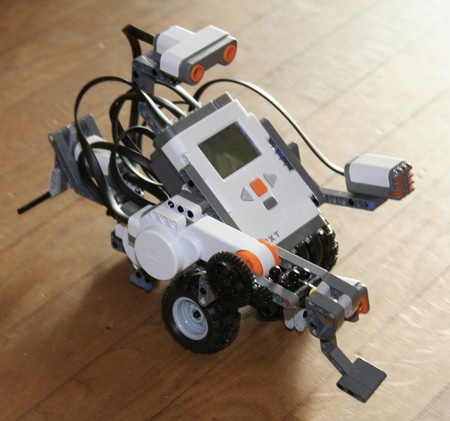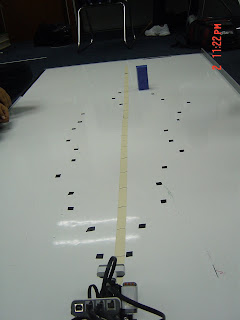
This is my last entry on robots. My experience in this class has been fun with all the building prgrammingand the use of sensors. What I have learnt in this class about building robots is that there are so many ways of building one. most of the robots features depend on what climte, terrain and variables the robot might face. If the terrain is rought, you may want to have treads or treaded tyres. If you want your robot to go fast, then, you would want big wheels and maybe the NXT would be at an angle to make it more aerodynamic. If you need sensors then you have got to make your robot viable to hold them.
Talking about sensors, do you know how to use them? We used ultrasonic sensors, light sensors, touch sensors and sound sensors. Bats use ultrasonic sensors to find how far their prey is away from them. That is exactly what robots do, minus the prey part. they use ultrasonic sensors to create a virtual image or just to see where everything is. We used light sensors to spot and follow a line, though you can use them for so much more. that you have to explore on your own. Touch sensors can be programmed to stop when touched or released. Thats what we did. In the obstacle course, we prgrammed it to go back when touched and turn when released. Sound sensors are also simple. what we did was just programmed the robot to start and/or stop when it heard a sound.
Programming is also a important factor in the "art" of robotics. If you dont program your NXT correctly then you will not do what you want your robot to do. we only did very minor and easy programming but if you know how to use your NXT, then you can do so much with it.
I have used alot of equations to find anwers in robotics. This means that I am a little better at math. Of course I am more technologically friendly from programming but I already knew all of the science.
To reason in this class, I have used math. To communicate and collaborate, we have been in groups most of the time and worked well together by talking with each other of what we are going to do.
BYE
Talking about sensors, do you know how to use them? We used ultrasonic sensors, light sensors, touch sensors and sound sensors. Bats use ultrasonic sensors to find how far their prey is away from them. That is exactly what robots do, minus the prey part. they use ultrasonic sensors to create a virtual image or just to see where everything is. We used light sensors to spot and follow a line, though you can use them for so much more. that you have to explore on your own. Touch sensors can be programmed to stop when touched or released. Thats what we did. In the obstacle course, we prgrammed it to go back when touched and turn when released. Sound sensors are also simple. what we did was just programmed the robot to start and/or stop when it heard a sound.
Programming is also a important factor in the "art" of robotics. If you dont program your NXT correctly then you will not do what you want your robot to do. we only did very minor and easy programming but if you know how to use your NXT, then you can do so much with it.
I have used alot of equations to find anwers in robotics. This means that I am a little better at math. Of course I am more technologically friendly from programming but I already knew all of the science.
To reason in this class, I have used math. To communicate and collaborate, we have been in groups most of the time and worked well together by talking with each other of what we are going to do.
BYE












